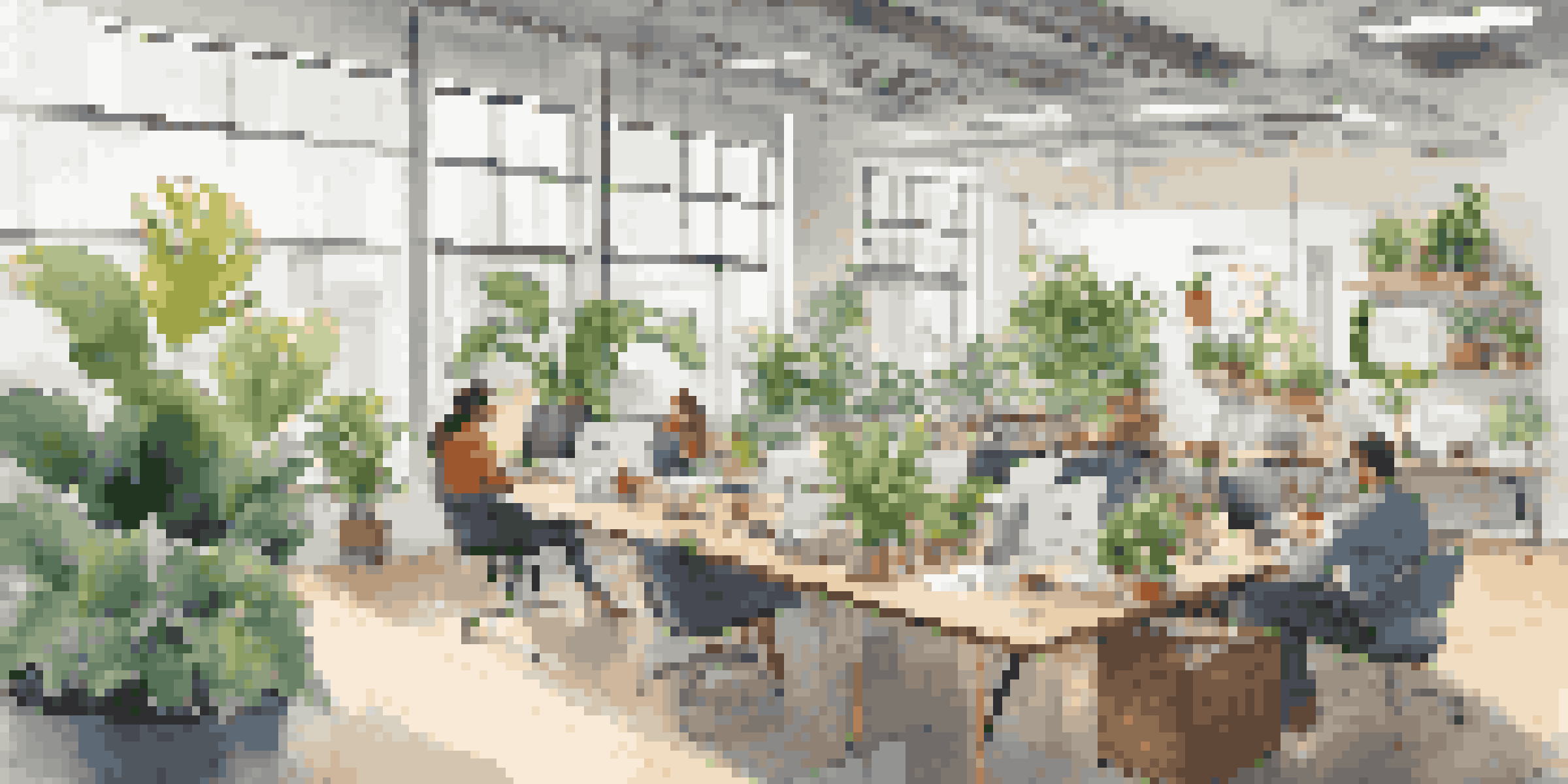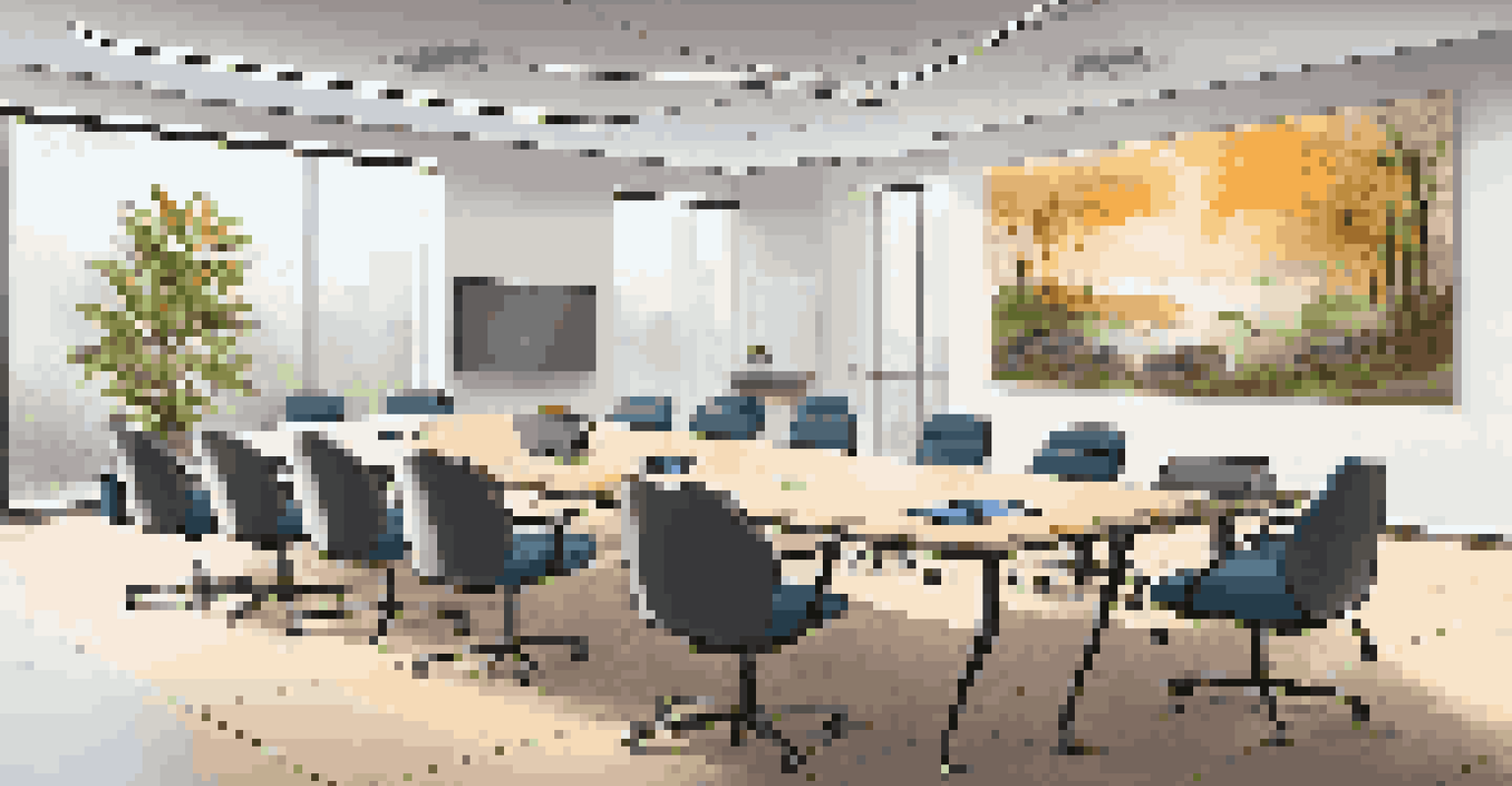Workplace Environment: Designing for Creativity and Innovation

Understanding the Importance of Workplace Environment
The workplace environment plays a crucial role in shaping employee creativity and innovation. A well-designed space can inspire fresh ideas and facilitate collaboration among team members. Conversely, a dull or uninspiring environment can stifle creativity, leaving employees feeling disengaged and uninspired.
The environment is the most influential factor in determining the behavior of individuals in a workplace.
When employees feel comfortable and motivated in their surroundings, they are more likely to contribute innovative thoughts and solutions. A positive atmosphere encourages risk-taking and experimentation, which are essential for creative breakthroughs. Thus, understanding the impact of the work environment is the first step toward fostering innovation.
Creating a workplace that embraces creativity involves a thoughtful approach to design, incorporating elements that resonate with your team’s values and goals. By prioritizing the needs of employees, organizations can cultivate an environment where creativity thrives and innovation flourishes.
Key Elements of a Creative Workplace Design
Several key elements contribute to a creative workplace design, including open spaces, natural light, and flexibility. Open-plan layouts can encourage collaboration by breaking down barriers between departments, allowing ideas to flow freely. Additionally, maximizing natural light can enhance mood and productivity, making employees feel more energized throughout the day.

Flexibility in workspace design is also vital, as it allows employees to choose where and how they work best. This could mean providing quiet areas for focused work as well as collaborative spaces for brainstorming sessions. Such versatility can significantly impact creativity, giving employees the freedom to adapt their environment to their needs.
Workplace Design Boosts Creativity
A well-designed workplace environment fosters employee creativity and innovation by encouraging collaboration and risk-taking.
Incorporating elements like plants, art, and comfortable furniture can further enhance a creative atmosphere. These design choices not only improve aesthetics but also contribute to overall employee well-being, which is essential for nurturing innovative ideas.
Encouraging Collaboration through Design
Collaboration is often at the heart of creativity, and workplace design can play a significant role in facilitating this. By creating designated collaboration spaces, such as huddle rooms or breakout areas, organizations can encourage spontaneous discussions and idea sharing. These spaces should be inviting and equipped with tools like whiteboards and technology for brainstorming sessions.
Creativity is intelligence having fun.
Moreover, fostering a culture that values collaboration is just as important as the physical space itself. When employees feel safe sharing their ideas and know that their contributions are valued, they are more likely to engage in collaborative efforts. Design should, therefore, reflect and support this culture, creating an environment where teamwork is not just possible but encouraged.
This approach not only helps generate innovative solutions but also strengthens team dynamics. When employees collaborate effectively, they bring diverse perspectives together, leading to richer ideas and more robust problem-solving.
The Role of Technology in Creative Workspaces
Technology plays a pivotal role in enhancing creativity in the workplace. By integrating the latest tools and platforms, organizations can empower employees to collaborate seamlessly, regardless of location. Virtual whiteboards, project management software, and communication apps can facilitate brainstorming sessions and ensure that everyone stays connected.
Furthermore, providing access to technology that supports creativity, such as design software or prototyping tools, enables employees to bring their ideas to life. This access not only boosts productivity but also encourages experimentation, as employees can test and iterate on their concepts more easily.
Collaboration Spaces Enhance Teamwork
Designated collaboration areas facilitate spontaneous discussions and idea sharing, strengthening team dynamics and driving innovation.
However, it’s essential to strike a balance; while technology can enhance creativity, it should not become a distraction. Encouraging mindful use of technology ensures that employees can focus on their creative tasks without feeling overwhelmed by constant notifications or digital noise.
Creating a Culture of Innovation
A creative workplace is not just about physical design; it’s also about fostering a culture of innovation. Leadership plays a critical role in this process by encouraging open communication and valuing employee input. When leaders actively seek out and implement ideas from their team, it cultivates a sense of ownership and pride in the workplace.
Moreover, recognizing and celebrating innovative efforts can motivate employees to think outside the box. Whether through awards, shout-outs in meetings, or showcasing successful projects, these acknowledgments reinforce the importance of creativity within the organization.
Ultimately, creating a culture of innovation requires ongoing commitment. It involves continuously assessing the workplace environment, gathering feedback from employees, and adapting to their needs and aspirations to ensure creativity remains a priority.
The Impact of Biophilic Design on Creativity
Biophilic design, which incorporates natural elements into the workplace, has gained popularity for its positive impact on creativity. By integrating features like indoor plants, natural materials, and water elements, organizations can create a calming atmosphere that promotes well-being. This connection to nature can reduce stress and enhance focus, ultimately fostering a more creative mindset.
Research has shown that exposure to nature can stimulate cognitive functions and improve problem-solving abilities. Incorporating biophilic design elements not only beautifies the workspace but also serves as a catalyst for innovative thinking. Employees who feel more relaxed and connected to their surroundings are more likely to engage in creative processes.
Biophilic Design Reduces Stress
Incorporating natural elements into the workplace can lower stress levels and improve focus, ultimately promoting a more creative mindset.
Incorporating biophilic design might be as simple as placing potted plants around the office or ensuring that workspaces have views of the outdoors. These small changes can significantly impact how employees feel about their environment and their ability to generate innovative ideas.
Evaluating and Adapting Your Creative Workspace
Creating a workplace environment that fosters creativity and innovation is an ongoing process. Regularly evaluating how the workspace supports or hinders creative efforts is crucial. This can involve gathering feedback from employees through surveys or informal discussions, allowing them to express their thoughts and suggestions.
Adaptability is key; as teams evolve and project needs change, so too should the workspace. Being open to making adjustments—whether that be reconfiguring office layouts or introducing new collaboration tools—ensures that the environment remains conducive to creativity.

By continuously assessing the workplace and being willing to implement changes, organizations can maintain a vibrant atmosphere that encourages innovation. This commitment to adaptability signals to employees that their creative contributions are valued and that the organization is invested in their success.